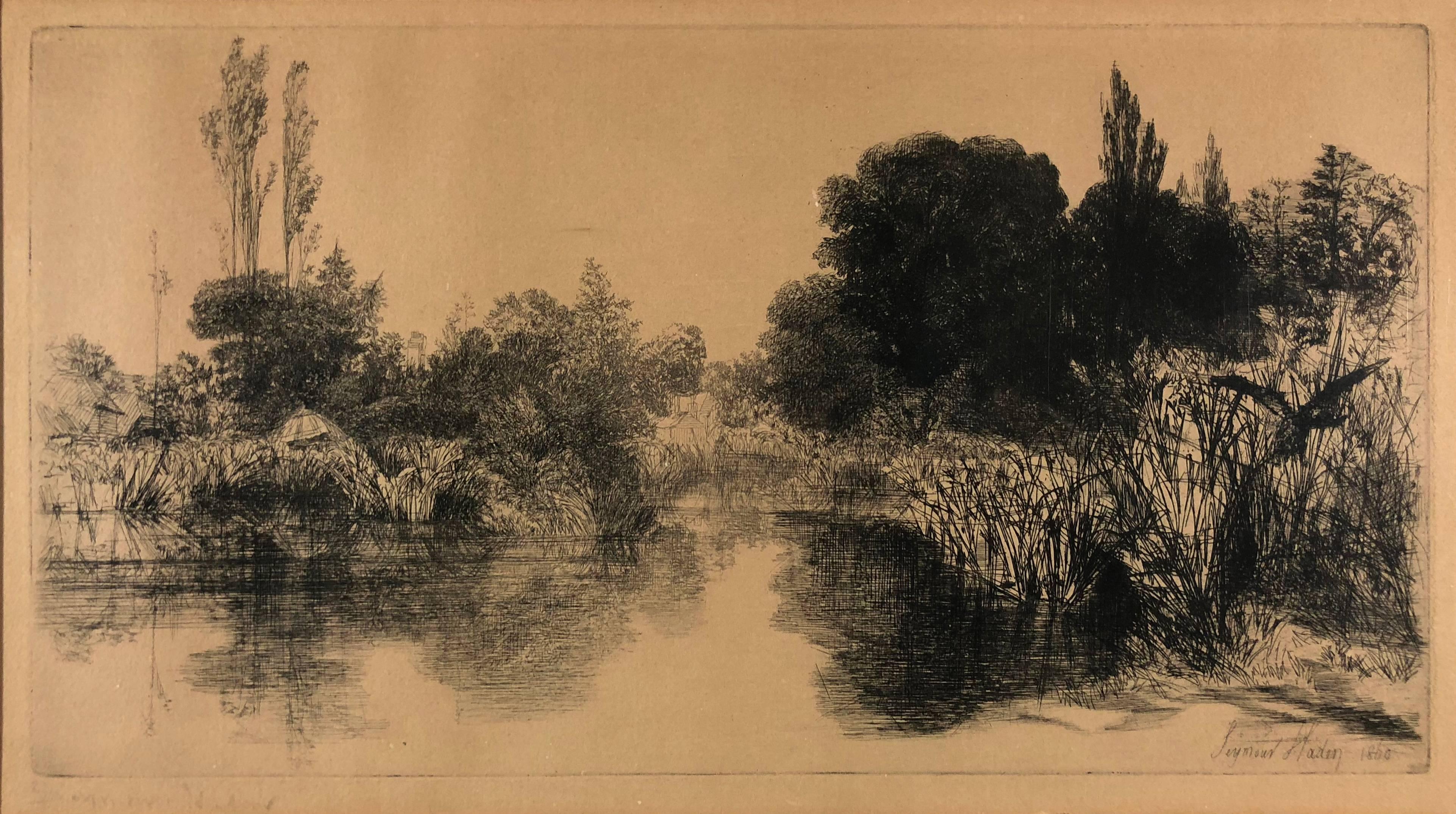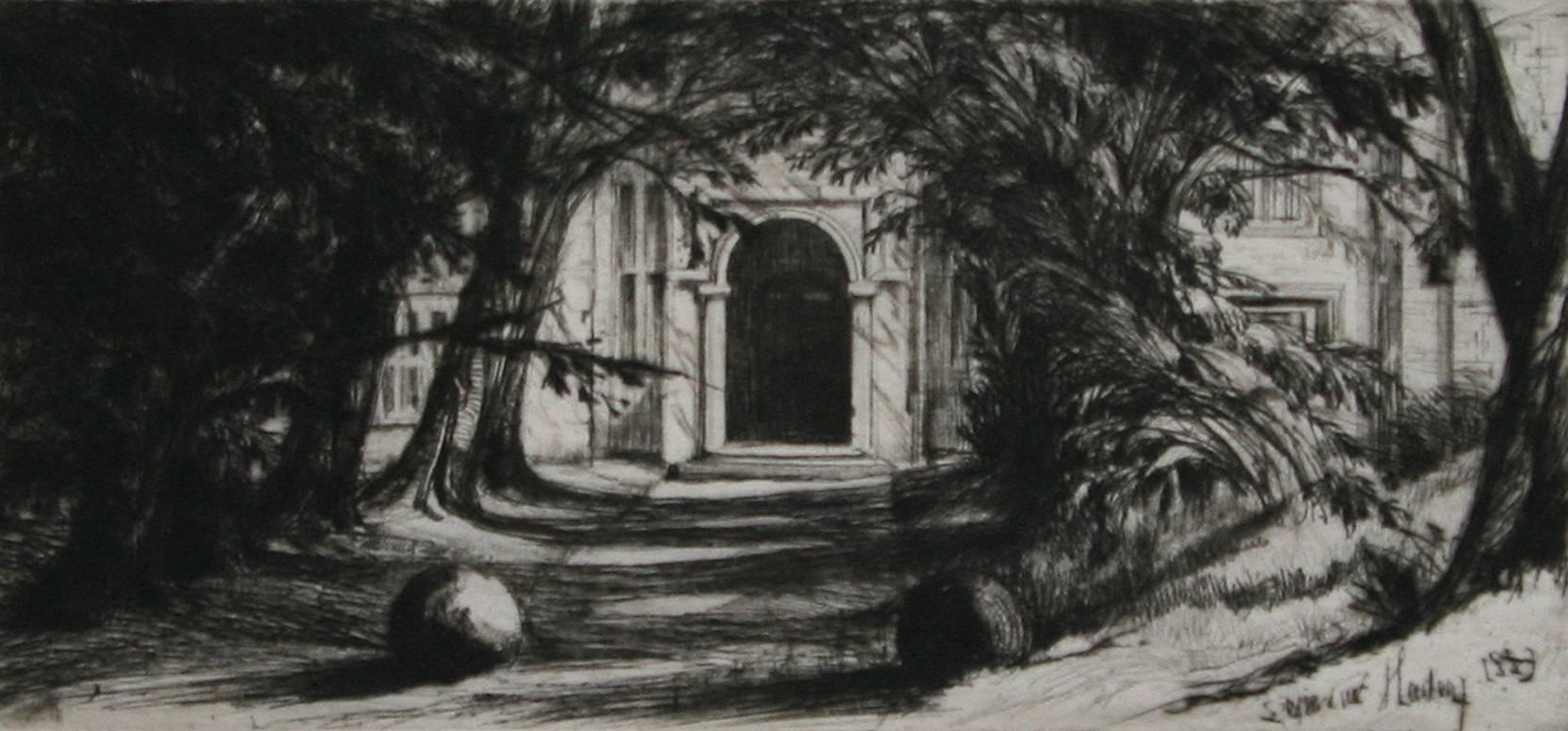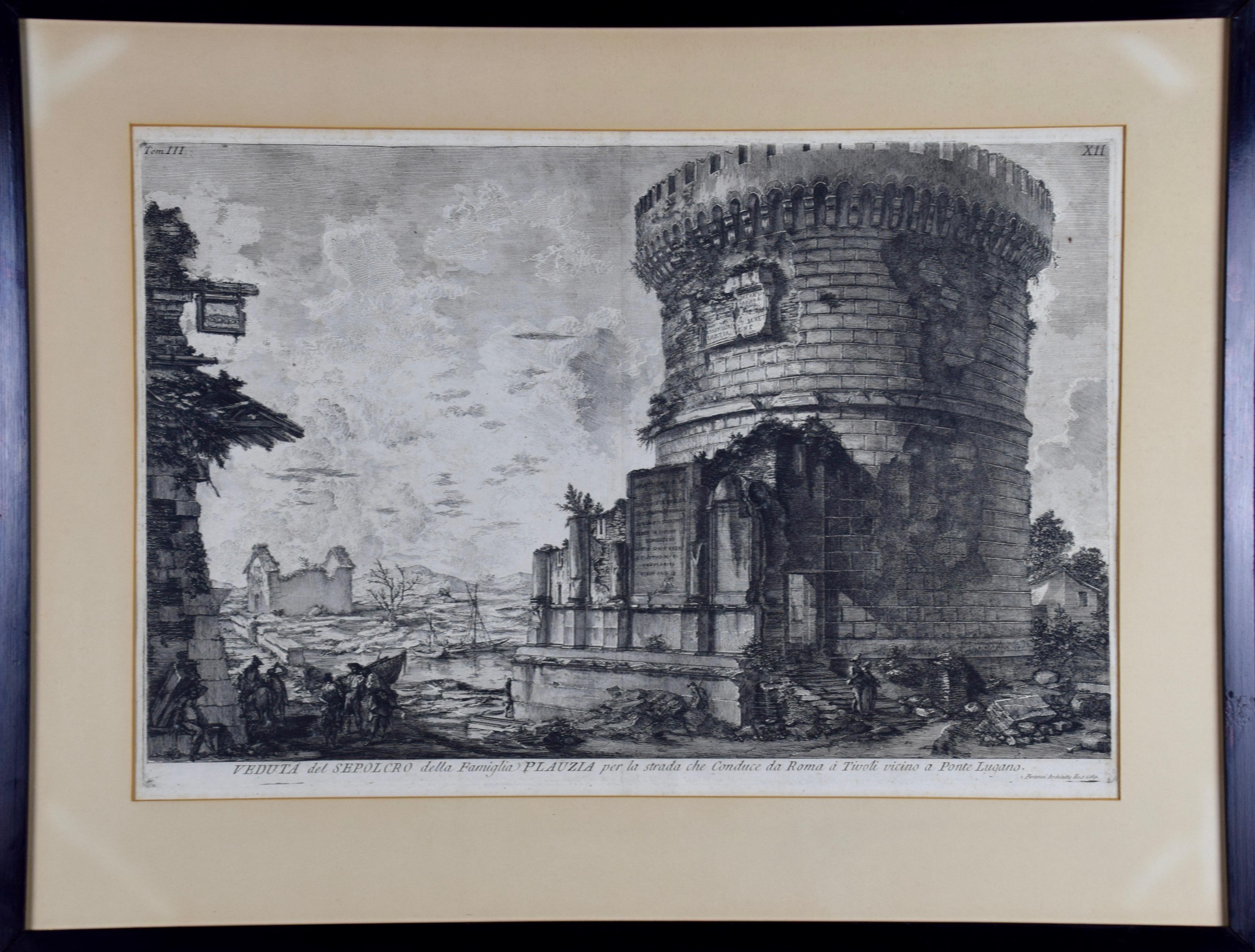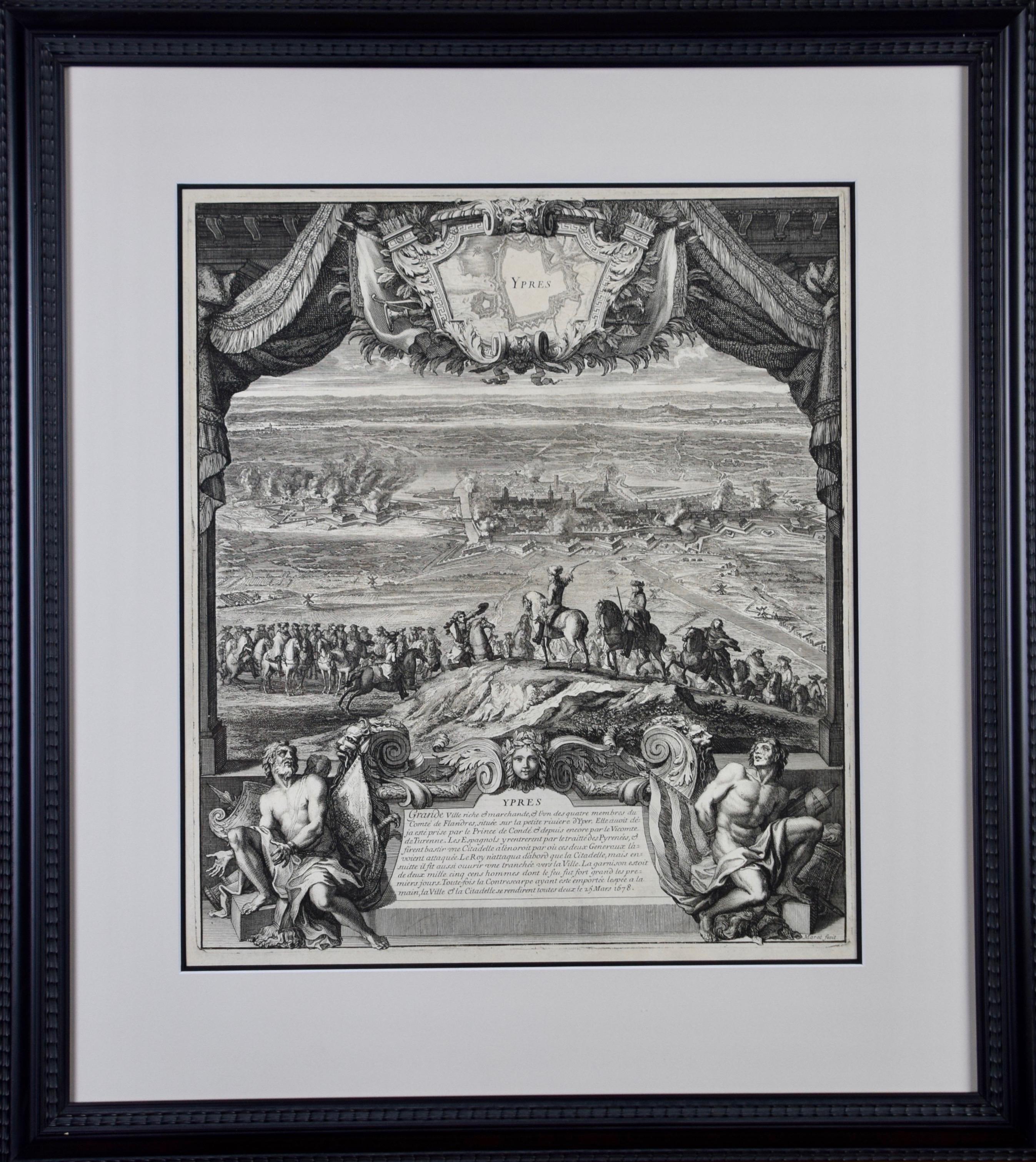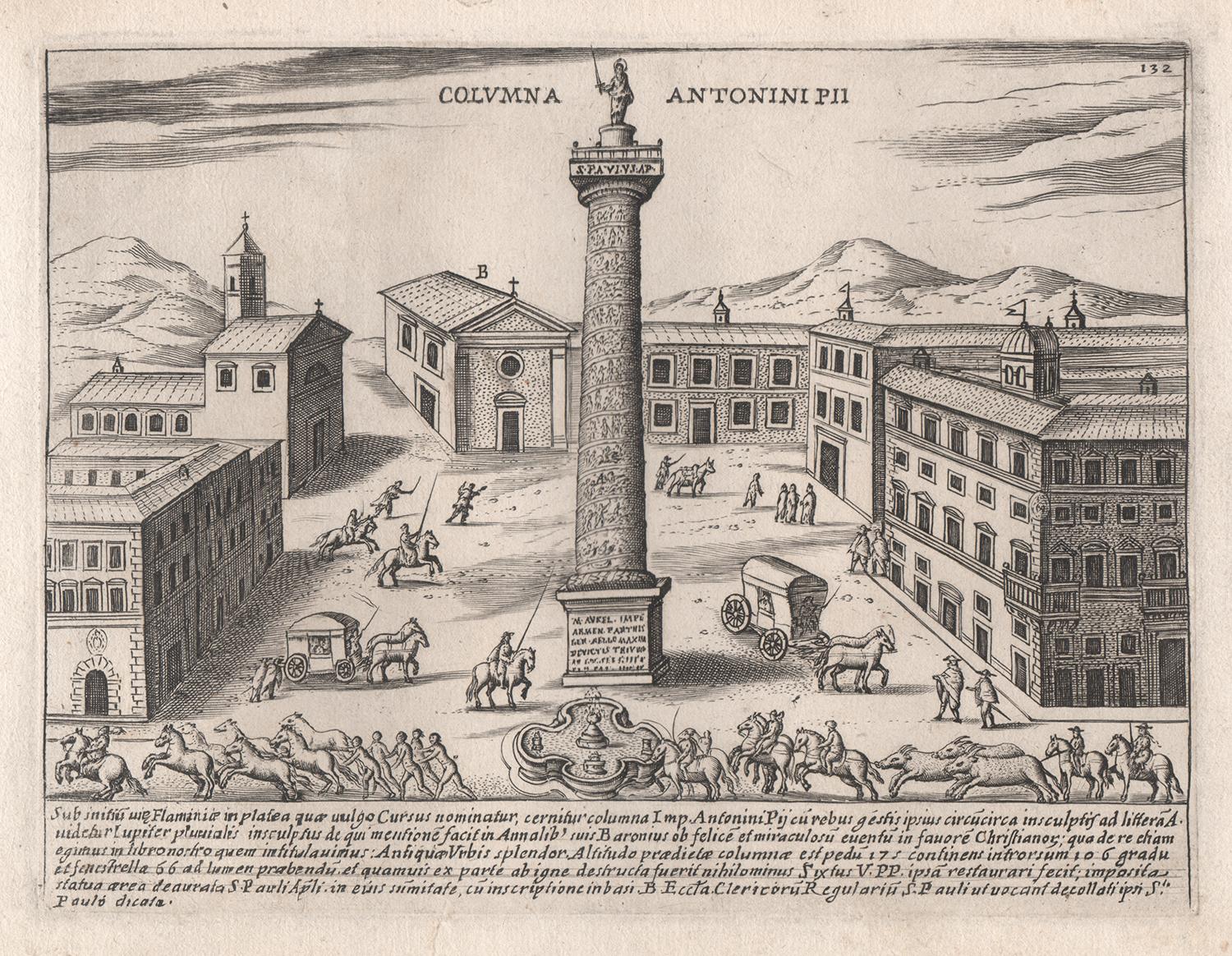Items Similar to COTTAGE AND OBELISK ON THE SPAARNDAMMERDIJK
Want more images or videos?
Request additional images or videos from the seller
1 of 2
Rembrandt van RijnCOTTAGE AND OBELISK ON THE SPAARNDAMMERDIJKc.1650
c.1650
About the Item
Original etching and drypoint printed in black ink on laid paper.
A strong and dark 17th century/lifetime impression of Bartsch, Usticke and New Hollstein’s second and final state of this rare etching (characterized by G.W. Nowell-Usticke in his 1967 catalogue Rembrandt’s Etchings: States and Values as “a scarce arched landscape,” and assigned his scarcity rating of “R” [75-125 impressions extant in that year]), printed after the addition of shading to the cottage and paling behind the wheelbarrow at the right, showing touches of burr along the lower edge.
Catalog: Bartsch 227 ii/ii; Hind 243; Biorklund-Barnard 50-3; Usticke 227 ii/ii; New Hollstein 249 ii/ii.
Provenance: Nathaniel Smith (British, c. 1740-1809), a well-known London sculptor and Old Master print-dealer and collector with fifty years in business, bearing his paraph (Lugt 1988) by hand in ink verso; also bearing an unidentified collection stamp (the letters "FH" in red ink) verso.
Literature regarding this artwork: Cynthia P. Schneider, Rembrandt’s Landscapes: Drawings and Prints, National Gallery of Art, Washington, D.C., 1990, no. 21, p. 115 (ill.);
Boudewijn Bakker/Mària van Berge-Gerbaud/Erik Schmitz/Jan Peeters, Landscapes of Rembrandt: His Favorite Walks, Thoth Publishers, Bussum, 1998, Ill. 1, p. 370 (ill.);
Christopher White, Rembrandt as an Etcher: A Study of the Artist at Work, Yale University Press, New Haven & London, 1999, no. 321, p. 235 (ill.);
Eric Hinterding, Rembrandt Etchings from the Frits Lugt Collection, Thoth Publishers, Bussum, 2008, no. 179, vol. II p. 202 (ill.).
Collections in which impressions of this state of this etching can be found: Rijksprentenkabinet, Rijksmuseum, Amsterdam; Kupferstichkabinett der Staatlichen Museen, Berlin-Dahlem; Fitzwilliam Museum, Cambridge; Städelsches Kunst institut, Frankfurt-on-Main; Teylers Stichting, Haarlem; Ermitage Museum, Leningrad; The British Museum, London; Pierpont Morgan Library, New York; Ashmolean Museum, Oxford; Bibliothèque Nationale, Paris; Duthuit Collection, Petit Palais, Paris; Collection Edmond de Rothschild, Musée du Louvre, Paris; Graphische Sammlung Albertina, Vienna.
During Rembrandt’s day in the hamlet of Spieringshorn, where between ten and fifteen cottages lay spread along the foot of the dyke, the most remarkable feature one would have encountered were two hardstone obelisks, that functioned as boundary stones. They had been placed there by the Amsterdam city council to mark the official boundary. The older obelisk closer to the city dated from 1559; after the extension of 1610-14 a new boundary stone was erected in 1624, further away from the city.
The well-know etching by Rembrandt traditionally known as “The Obelisk” is based on drawings he made of this second boundary stone in its setting. In the center of the etching we see a thatched cottage of the langhuisstolp type. We just glimpse the front wall of the fore-house, with its door and window above it, and the extended king-post. The brick chimney, marking the division between the dwelling section and the barn, has a cap construction presumably against the rain and probably also has a starling pot. The construction of the barn section of the cottage isn’t completely clear. At the back te roof os somewhat raised to accommodate a doorway that carts can drive through; above this is a perch for pigeons. On this side the roof slopes down until it is close to the ground. The front of the building is presumably built on an artificial mound, for tem base of the side wall is lower than that of the front wall.
A wheelbarrow stands in front of the cottage with a somewhat unclear construction behind it, possibly a cart. Against the side wall, partly protected by the low-hanging thatch, is a rack on which a milk pail or jug is drying. Behind the cottage, half hidden by the boundary stone, is a low haystack, suggesting that much of it has already been used and the winter months are over.
The position of the cottage appears rather curious. In the foreground is the bank of a pool or ditch, with a dog drinking from the water. The indistinct track of cart wheels runs from them water and in front of the cottage towards some dwellings grouped around what looks like a church tower. Halfway along, a cow is standing in the grass and further away is a man with a scythe.
The obelisk commands at least as much attention as the cottage. It is a solid hardstone pillar standing on a tall brick pedestal. On te upper side fo the base are three hardstone plates, the central one serving as a drip, that is, a projection at the edge of the cornice designed to throw water clear. Resting on these plates is a block consisting of two sections, decorated with scrolls, on which stood the actual obelisk. In the upper half of the block there was a text inscribed in Latin or Dutch stating that this point marked a judicial boundary line. About halfway up the obelisk were two oval shields which appear to be repeated on the left side; these oval apparently contained the Amsterdam city arms surmounted by the emperor’s crown.
It is significant that Rembrandt first made an etching of a far shorter obelisk, the tip of which, crowned with a ball, reached to the edge of the paper. Apparently, on consideration he made the obelisk taller and thicker, thereby adding considerably to the strength and force of the etching’s composition. Also interesting is the fact that Rembrandt presents the haystack in a kind of symmetrical balance to the obelisk so that the rick and its four poles appears to become part of the stone needle.
- Creator:Rembrandt van Rijn (1606 - 1669, Dutch)
- Creation Year:c.1650
- Dimensions:Height: 3.32 in (8.44 cm)Width: 6.38 in (16.21 cm)
- Medium:
- Movement & Style:
- Period:
- Condition:
- Gallery Location:San Francisco, CA
- Reference Number:
About the Seller
5.0
Vetted Seller
These experienced sellers undergo a comprehensive evaluation by our team of in-house experts.
Established in 1998
1stDibs seller since 2011
75 sales on 1stDibs
Typical response time: 15 hours
- ShippingRetrieving quote...Ships From: San Francisco, CA
- Return PolicyA return for this item may be initiated within 3 days of delivery.
More From This SellerView All
- La PLage de BordigherraBy Hughes Claude PissarroLocated in San Francisco, CAScreenprint printed in colors on heavy wove paper. Hand signed in black crayon lower right H. Claude Pissarro. A superb impression of the definitive state, from the edition of...Category
20th Century Impressionist Landscape Prints
MaterialsScreen
- MaruruBy Paul GauguinLocated in San Francisco, CAOriginal woodcut printed in black ink on chine volant paper Titled and signed in the block with the artist’s monogram lower right MARURU PGO. A superb impression of the definitive...Category
1890s Post-Impressionist Landscape Prints
MaterialsWoodcut
- Madonna with a Swaddled InfantBy Albrecht DürerLocated in San Francisco, CAOriginal engraving printed in black ink on laid paper. Dated and signed with the artist’s monogram on a tablet lower left. A superb, richly inked 16th century/lifetime Meder “a” (o...Category
16th Century Old Masters Prints and Multiples
MaterialsEngraving
- Madonna and Child with the MonkeyBy Albrecht DürerLocated in San Francisco, CAA good, clear later 16th century Meder “l” impression, showing strong contrasts throughout, printed after the appearance of the dot in the clouds upper center. Catalog: Bartsch 42;...Category
18th Century and Earlier Old Masters Figurative Prints
MaterialsEngraving
- The Artist’s Mother seated at a table, looking right: Three quarter lengthBy Rembrandt van RijnLocated in San Francisco, CAOriginal etching printed in black ink on laid paper bearing a “Foolscap with Five-Pointed Collar” watermark (Ash/Fletcher 19.I.b; Hinterding 2006 I.a.a). Signed in the plate with ...Category
18th Century and Earlier Old Masters Portrait Prints
MaterialsEtching
- The Raising of Lazarus, Small PlateBy Rembrandt van RijnLocated in San Francisco, CAOriginal etching printed in black ink on laid paper. Signed and dated in the plate lower left Rembrandt f. 1642. A fine 18th century impression of Bartsch and New Hollstein’s secon...Category
1640s Old Masters Prints and Multiples
MaterialsEtching
You May Also Like
- Breaking up of the Agamemnon, No 1By Sir Francis Seymour Haden, R.A.Located in Storrs, CTEtching and drypoint. Schneiderman 133.v/xi. 7 3/4 x 16 3/8 (sheet 9 1/4 x 17 1/2). A rich impression with plate tone printed in black/brown in on antique cream wove paper. Signed in...Category
Mid-19th Century Old Masters Landscape Prints
MaterialsDrypoint, Etching
- Shere Mill PondBy Sir Francis Seymour Haden, R.A.Located in Missouri, MOShere Mill Pond, No. II (large plate). 1860. Etching and drypoint. Schneiderman 37.v/ix. 7 x 13 1/8 (sheet 10 3/4 x 16 3/8). This state is prior to publication in Études à l'Eau-Forte. Illustrated: Keppel The Golden Age of Engraving; Print Collector's Quarterly 1 (1911): 18; : Guichard, British Etchers, 1850-1940. A rich, brilliant proof with drypoint burr printed on white laid paper. Signed in pencil. ------------------------------------------------------------------------------------------- Shere Mill Pond, No. II was one of the most highly praised landscape prints of the etching revival. An impression was exhibited at the Royal Academy in 1861 under Haden’s pseudonym, H. Dean. Francis Seymour Haden used this anagram of his own name early in his career as an artist, in order to retain his anonymity and preserve his professional reputation as a surgeon. Biography: Sir Francis Seymour Haden (16 September 1818 - 1 June 1910), was an English surgeon, best known as an etcher. He was born in London, his father, Charles Thomas Haden, being a well-known doctor and lover of music. He was educated at Derby School, Christ's Hospital, and University College, London, and also studied at the Sorbonne, Paris, where he took his degree in 1840. He was admitted as a member of the College of Surgeons in London in 1842. In 1843-1844, with his friends Duval, Le Cannes and Colonel Guibout, he travelled in Italy and made his first sketches from nature. Haden attended no art school and had no art teachers, but between 1845 and 1848 he studied portfolios of prints belonging to a second-hand dealer named Love, who had a shop in Bunhill Row, the old Quaker quarter of London. Arranging the prints in chronological order, he studied the works of the great original engravers, Albrecht Dürer, Lucas van Leyden and Rembrandt. These studies, besides influencing his original work, led to his important monograph on the etched work of Rembrandt. By lecture and book, and with the aid of the memorable exhibition at the Burlington Fine Arts Club in 1877, he tried to give a true reflection of Rembrandt's work, giving a nobler idea of the master's mind by taking away from the list of his works many dull and unseemly plates that had long been included in the lists. His reasons were founded upon the results of a study of the master's works in chronological order, and are clearly expressed in his monograph, The Etched Work of Rembrandt critically reconsidered, privately printed in 1877, and in The Etched Work of Rembrandt True and False (1895). Haden's printmaking was invigorated by his much younger brother-in-law, James Whistler, at the Haden home in Sloane Street in 1855. A press was installed there and for a while Haden and Whistler collaborated on a series of etchings of the Thames. The relationship and project did not last. Haden followed the art of original etching with such vigour that he became not only the foremost British exponent of that art but brought about its revival in England. His strenuous efforts and perseverance, aided by the secretarial ability of Sir WR Drake, resulted in the foundation of the Royal Society of Painter-Etchers and Engravers. As president he ruled the society with a strong hand from its first beginnings in 1880. Notwithstanding his study of the old masters of his art, Haden's own plates were very individual, and are particularly noticeable for a fine original treatment of landscape subjects, free and open in line, clear and well divided in mass, and full of a noble and dignified style of his own. Even when working from a picture his personality dominates the plate, as for example in the large plate he etched after J.M.W. Turner's "Calais Pier," which is a classical example of what interpretative work can do in black and white. Of his original plates, more than 250 in number, one of the most notable was the large "Breaking up of the Agamemnon." An early plate, rare and most beautiful, is "Thames Fisherman". "Mytton Hall" is broad in treatment, and a fine rendering of a shady avenue of yew trees leading to an old manor-house in sunlight. "Sub Tegmine" was etched in Greenwich Park in 1859; and "Early Morning--Richmond", full of the poetry and freshness of the hour, was done, according to Haden, actually at sunrise. One of the rarest and most beautiful of his plates is "A By-Road in Tipperary"; "Combe Bottom" is another; and "Shere Mill Pond" (both the small study and the larger plate), "Sunset in Ireland," "Penton Hook," "Grim Spain" and "Evening Fishing, Longparish," are also notable examples of his genius. A catalogue of his works was begun by Sir William Drake and completed by Harrington in 1880. During later years Haden began to practise the sister art...Category
Late 19th Century Old Masters Landscape Prints
MaterialsEtching, Drypoint
- Mytton HallBy Sir Francis Seymour Haden, R.A.Located in Storrs, CTMytton Hall. 1859. Etching and drypoint. Schneiderman catalog 19 state .iii/v. 4 13/16 x 10 5/16 (sheet 5 3/4 x 10 15/16). As published in Études à l'eau-forte XXIV. Illustrated: Guichard, British Etchers, 1850-1940. An extremely rich impression printed on fine laid paper. Signed in the plate. Housed in a 16 x 20-inch archival mat. Mytton Hall is a fifteenth century mansion house situated on the River Ribble, at Whalley near Blackburn, Lancashire. Haden used to stay there when he went salmon fishing. R. Gutekunst, the dealer who inherited the rights to sell all of Francis Seymour Haden's remaining prints upon his death, noted on the front of his catalogue in July 1911: "It may be useful to add that those impressions of Sir Seymour Haden's early and rare etchings, which were published in portfolio form in Paris in 1865-66, under the title Études à l'eau-forte have, with the exception of one or two sets, never been signed in autograph by Sir Seymour, and do not, of course, bear any stamp of any kind." Although Gutekunst had impressions of the majority of Haden's works for sale, he had no remaining impressions of Mytton Hall. Henry Taylor...Category
Mid-19th Century Old Masters Landscape Prints
MaterialsDrypoint, Etching
- Giovanni Piranesi Etching of Ancient Roman Architecture, 18th CenturyBy Giovanni Battista PiranesiLocated in Alamo, CA"Veduta del Sepolcro della Famiglia Plauzia per la Strada Che Conduce da Roma a Tivoli vicino a Ponte Lugano" from "Le Antichità Romane" (Roman Antiquities), one of the most famous works by Piranesi. "Antichita" illustrates the tombs along the Appian Way...Category
Early 18th Century Old Masters Figurative Prints
MaterialsEtching, Engraving, Drypoint
- Daniel Marot's The Siege of the Dutch Fortified City of Ypres by Louis XIVBy Daniel MarotLocated in Alamo, CA"Ypres, Grand Ville Riche & Marchande" is an engraving and etching by Daniel Marot (le Vieux) (1661–1752). It depicts a view of the siege of the city of Ypres and its citadel on the left in the Spanish Netherlands by Louis XIV's troops. This battle took place between March 18 and March 25, 1678, as part of the Franco-Dutch War. Marot illustrated in great detail (best appreciated with magnification) the French attack on the strong pentagonal citadel on the extreme left, which had been built recently in anticipation of a French attack. The trenches built by the French approaching the town are seen on the right. King Louis XIV can be seen in the foreground surveying the battle mounted on his white horse, surrounded by his officers and troops. The print is presented in an attractive ornate black wood frame with a cream-colored double mat with a black inner trim. It is glazed with plexiglas. The frame measures 25.38" x 22.63" x .88". The engraving, frame, mat and glazing are in excellent condition. Artist: Daniel Marot (1661–1752) was also called "Le Vieux". He was the son of the famous architect, Jean Marot. Marot had diverse interests and talents. In addition to his art, he designed garden projects, architectural ornaments, furniture, and even upholstery. Marot as a Huguenot protestant was forced to leave France in 1685 following the revocation of the Edict of Nantes. He emigrated to Holland, where he worked for William of Orange (an arch enemy of his former employer Louis XIV). Marot was largely responsible for the interiors of Williams palace at the Loo. In 1694 he went Britain as William had married Queen Mary and he had become King William III of England. He later returned to Holland in about 1698 and died in the Hague in 1752. He left a lasting legacy on the decorative arts in the Netherlands, where his grand version of the Louis XIV style remained popular into the 1730s. Historical Background: In October 1677, Mary Stuart, niece and possible successor of Charles II of England, married Louis XIV's arch enemy William III of Orange...Category
Late 17th Century Old Masters Landscape Prints
MaterialsEngraving, Etching
- Column of Antoninus Pius, Rome Italy. Jacobs Lauro 17th century engravingLocated in Melbourne, VictoriaLauro produced a series of engravings of the ancient monuments of Classical Rome with detailed descriptions in Latin below. 180mm by 240mm (plate mark)...Category
Early 17th Century Old Masters Landscape Prints
MaterialsEngraving, Etching

